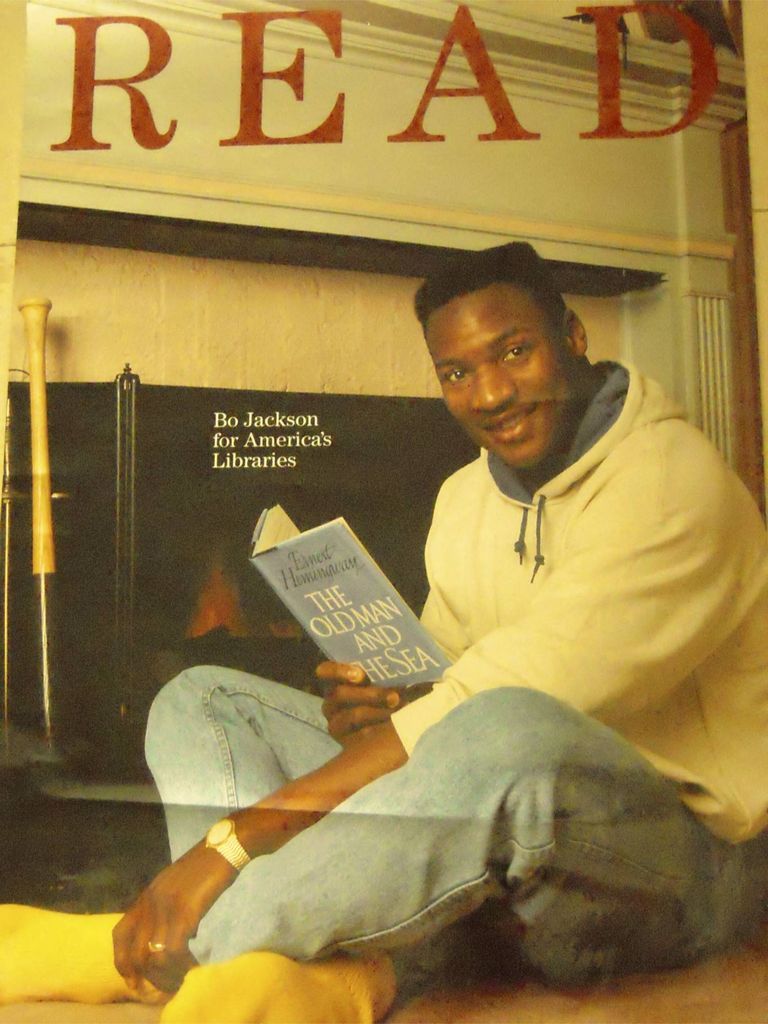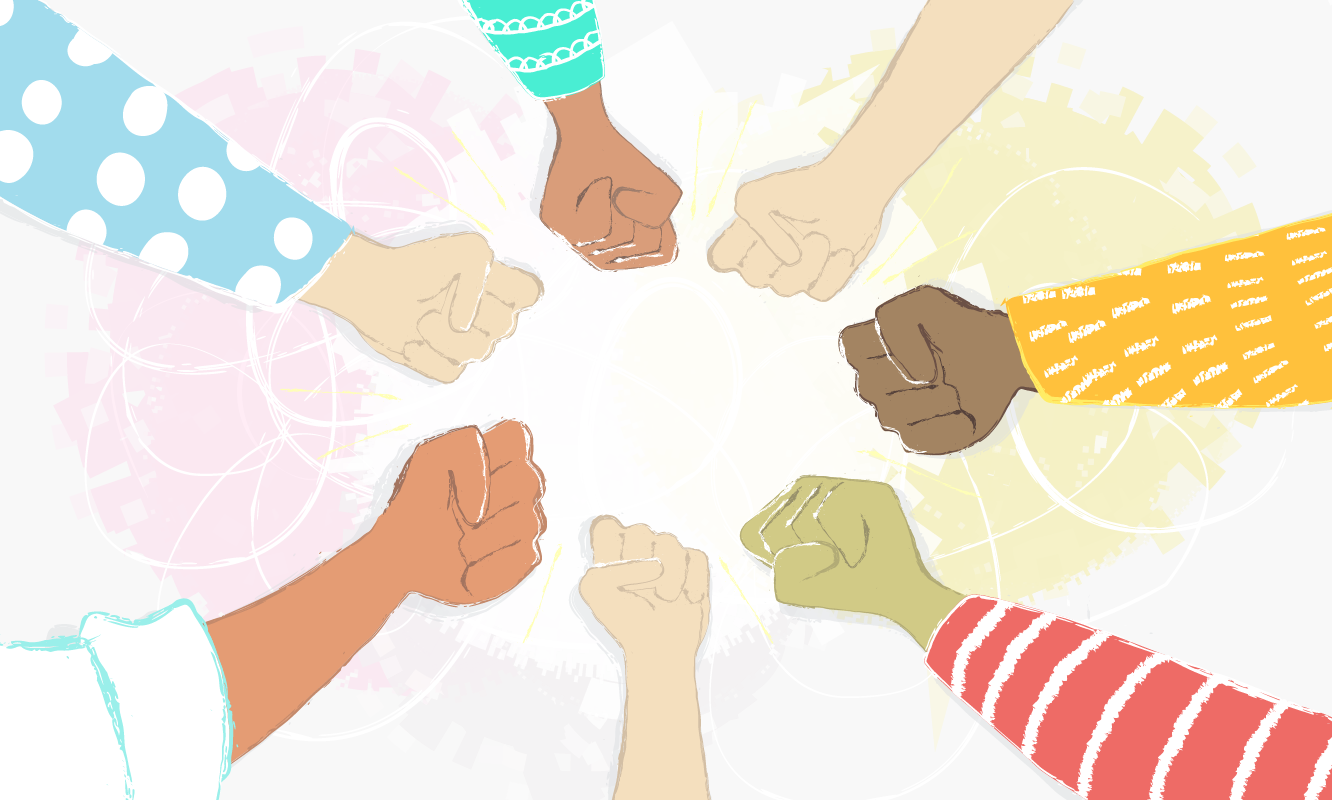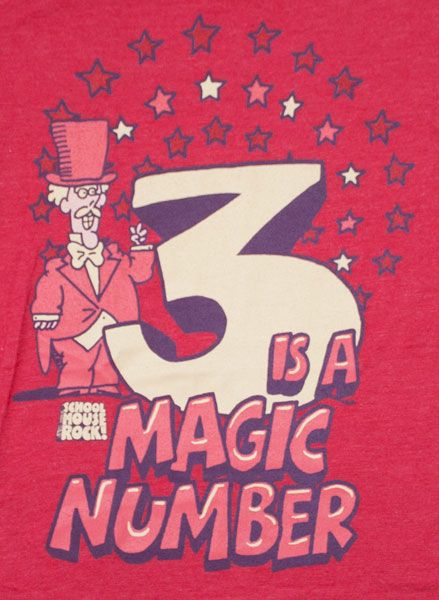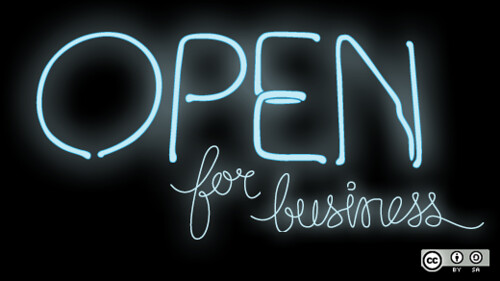As the year comes to a close, I have reached the end of a stressful few months. Starting a new job, I had to do my first academic evaluation of the work I have accomplished over the past two months. Luckily, I was able to have the time to take care of this before the holiday season. With the extra time, I can focus on some side projects, including starting this blog.
It also marks the end of my annual theme. If you are not familiar with this concept, think of it as a new year’s resolution that you have a chance to complete. 2024 was the year of Openness and 2025 is going to be the year of Branding for me. As I close on the prior theme, and I'm in a self-reflective mood, I thought about making a mixtape.
Now, I know there is a chance that some of you are not familiar with this concept. A mixtape is where you take a list of songs and have some sort of centralized theme around it. The goal is to share this music with your friends to get their approval. While some people used it as sort of a means to flex on their musical knowledge, others wanted to convey a story to them. For me, I grew up in the age of cassettes and CDs, but now we have adjusted this to a playlist. So, indulge me for a moment as I share one with you.

An opening track to me sets the table for what you are able to hear. For me, this is going to be a very brief look at my career. My story is how I went from an Information Technology (IT) professional to a digital archivist. It sets a tone for some events I will describe on this journey.
If you are new here, welcome. My name is Patrick Burden. I have over 17 years of IT experience and over four years in libraries. Most recently at the University of West Virginia as their Digital Collections Archivist. I have set myself apart from other colleagues in being able to combine both of these disciplines. Preserving the past before it fades to bits. If you are not new here, welcome back. Given that this is the first post on the website, I'm glad you decided to check out the first one.
So, it is time to start from the beginning: the origin story of figuring out what I wanted to be when I grew up.
It’s all about the Mechanical Keyboards

A mechanical keyboard is what made me choose to get a career in Information Technology. Sorry for spoiling this section from the jump. Sometimes you figure it out early for the dumbest reaosns. There were three distinct moments in my life that solidified my path down this road.
The first was in third grade. In which I heard the clangs of the 1980s keys. Granted in 1994 you would consider this old then, but as kids we didn’t care. The computer was in the back of the room, and the buckling springs on the keyboard were hard not to ignore. Of course, we played the hit blockbuster at the time, Oregon Trail. I liked it less than learning how the settlers were crossing America. Rather seeing the potential of technology and what it can do to bring people together.
This was short-lived because the following year the Internet existed. Oh I should say the school got a new computer lab and had Internet installed in there. That means in marketing circles I am considered a Xenial. A person that grew up in analog and lived as the transition to digital took place. Unlike many other contemporaries in my group, my parents were not on the cutting edge. I played Crystal Caves in DOS on a Windows 3.1 machine. Later, I went with my dad to the Fort Washington Expo Center to buy a “legally new computer.” It came with Windows 98, Office 97, and a modem. I was online with AOL from the comfort of home. Asking for people's a/s/l in chatrooms and playing Yahoo Pool.
In middle school, I got further exposed to computers by taking electives involving it. Som classes had me making a website using HTML. Learning how to type (I recommend you do so if you haven't). I also made very bad flash pages with sound effects. That was also the first time I was able to see Toy Story and marvel at Hollywood's first full CGI film.
It was seeing the future, and I knew that a computer was going to take me to where I wanted to go. Lumping all these things together allowed me to start narrowing down what I wanted to do. I did not lock it in until 2002.
Writing what was Unwritten

I just found out this song was making a comeback due to it being featured in a romcom and could not be happier for it, it is a good song.
I grew up in the Hatboro-Horsham School District, one of the top 20 places to live in if you are a family. We peaked at number 15 since I saw that number all over the place on lamp posts. In 2002, I was in 10th grade and needed to sign up for classes for the following year. Depending on your age and where you went to school, this might not have been the same. We were one of the first schools to use block scheduling.
The best way I can describe it is having your school year in two distinct halves. You would do four classes the first half of the year, and after finals, the second half would have four more. It was their attempt to get us ready for picking classes in college by simulating the experience. This also meant that classes were, on average, 80 minutes long. There are more details about how this works, but that is enough to tell you the rest of the story.

This is close enough to what mine looked like to convey the idea.
I received a book with the course selection in it. Our job was to fill out an index card with the mock schedule and then turn it in to our homeroom. As someone who wanted to get into computers, I had two real choices to make.
First was to take a Java programming class. The teacher was a nice person, and I remember being in the room where it would take place. It was half a computer lab and half a classroom. Posters covered the walls in the most 90s fashion. From READ, to DARE, to warning people not to touch the film behind the door of your floppy disc.

From what I gathered, the course would have been fine. I would have made a website, added some Java, and then shared it with the class. As someone who had already done that on GeoCities, that would have been the easy choice to go to.
There was another option that required me to talk to my guidance counselor. I would sign up for a two-year course (eight blocks) in computer network administration. This class took place at a vocational school. This would limit the choices I chose to pick to do in high school. The goal was for kids who did not want to go to college to learn a trade and go right to work. The implication was that I would forgo college and take these classes to start a career. I valued learning from people with experience rather than reading out of a textbook.
I was going to make the commitment to take the class for the next two years. While teachers in my school were striking and classmates were on break, I went in for this class. In the end, I graduated with a CNA in Novell NetWare 5.x and 6.1 (this was before SUSE got involved) and an MCP in Windows 2000. I was ready to work. My parents slammed that door on me getting a job after high school and forced me to go to college.
I wanted to go to a community college to get my degree and have the hands-on experience right away. They wanted me to get to a four year school. Since they were paying for half of it, they made the choice. Penn State Abington won. I majored in IT (with a focus on integration) and minored in business administration. This led to the final chance for me to escape. I could have gone to the business school and learned tech there. This would have led me to a more managerial side of technology. I did not care about that at all. I wanted to “do the work” on the computer and locked myself in that path.
The other two decisions had me thinking about the implications of what I was going to do. The last one was more of a snap judgement. I interviewed for a role at PDQ POS Systems. If you have ever gone into a Jimmy John’s before, they are the people who make the point-of-sale systems for them. I was nervous and was being interviewed for a job in which the owner did not care for my degree. Somehow, I did well enough to land the job but had to make a choice at the end of it. I could either be an installer of the equipment or work in a call center with technical support. Since I did not want to travel for a living, I chose the latter and locked myself into my IT career path.
Working 9 to 5

This is the point in the story that I am going to skip ahead a bit. Since it is more on the IT side of things rather than the archiving side. The biggest takeaway you need to know is that I was getting paid an annual salary of $17,500 in 2008. I was also still looking for the office job of the future. While today this is no longer the case, at the time the goal was to work for a company for the long term. I would then grow within the ranks and advance my career. Then, after sticking around for 30 years, I would retire with a pension. Depending on who you follow on social media would gauge the reaction to this ever being a viable option.
I then bounced around IT jobs, getting more money as I went. I was a manager of a call center group before we had those jobs outsourced. I was a remote tech for businesses. I helped make Customer Management Systems (CMS) platforms. I tried to dabble in online media, but didn't get very far. Finally, I landed a senior customer service position in a stable spot.
I thought I had found the place in Global DMS, started working there in 2012. They are a real estate software company. Making online software to help research and close sales with their clients. With my technical skills and being able to learn new programs, I became a good employee. I was happy in my role, now making mid 50k, the highest of my career, and I was able to not work check to check that often. Then two key things happened.
Finding myself on a new path

First, my manager at the time got promoted. She was one of the best people I had worked with. She focused on team dynamics and making sure everyone was able to get their work done. The replacement was another manager that I did not see eye to eye on. They were very metric-focused on calls and callbacks. There were many times when I could not answer the question on the first call. In the land of metrics, this was a bad thing to do. I would rather give them the correct answer the first time rather than make up one for them to callback. This determination also led me to save the company a client since I spent over seven hours with them. That was on a text chat, but nonetheless I took pride in listening and making customers happy.
The second sign was seeing a former colleague join the company. At PDQ POS, I often worked with the installers. As the person they would call if there were any issues with their software. Walking them through those tricky things that often get overlooked. The manager that was with the installers worked next to the call center, and I was able to be friendly with them. I did not work for him, but we knew each other enough.
It turns out that they got hired as the head of QA for Global DMS. It was both an odd feeling and a welcome sight seeing them again in which we would have had the same relationship. After a few months, he asked if I wanted to join him on the QA side. I knew the customer well and knew the intricacies of the application. He wanted a junior QA person to help with the simple tests so that he could focus on the bigger picture. This led to my leaving customer service roles and moving into quality assurance.
The goal was to help him with the new software and work with the development team. I would bring my knowledge as the new software was being developed. I was achieving the dream and doing what was the correct path for my career.
That was until he quit less than a month later.
Turns out he, like many other people in the IT field, was career hopping. A person would jump from position to position, getting bumps in their salary. This happened often in the IT field. I did not recognize it at the time since my goal was to plant roots and build with the business. He had other plans.
After giving me enough time to settle into this new role, he told me flat out that he was going to quit. Before leaving, he gave me some final advice. Make sure I clock in and out when I am working. Doing anything extra would be charity for the company. With the bump in pay, I did not mind it at first, but it would come back to me in the future.
The company realized I did not have the experience to be a senior in the role and hired a manager. They also promoted my colleague from customer service to join the new QA group. I would be responsible for creating automated tests and test cases for the new software. He would tackle the existing platform since the development needed to start over. This time we were doing some agile programming, complete with stand-ups and sprints. I know now that this meant a death sentence.
With the new manager having new expectations. I focused on testing to get the best product to the customers. Their focus was to get the thing done so the company could make money. This led me to be an outsider from my own team. This conflicted with my only working here technique. Some team members were going to be there until it launched before moving to a new company.
The moment I realized I had to leave was when my manager had me sign a probation document. For the next 90 days, they were going to see if I would still be in my role. I also was not told the metrics I had to achieve, so I didn’t know what I could do to improve the situation. With signing away my stability that I thought I had achieved, I knew it was time to abandon ship.
Since things were rocky, I was planning for this to happen and found a new job. They were being acquired by Aimia and had funds to increase their QA from one to two people. Turns out the manager I would be working with had the same values as I did when it comes to testing. Make the best product right the first time and go above and beyond to ensure that customers are happy. Given that I moved to the same state as the company, my commute would be 2 hours faster. This was a simple decision to make.
This may have come as a surprise to you, but my manager “didn’t see me leaving the company.” I held my tongue about the trust issue with being on probation and said that it was the commute. I was there for five years with no plans of leaving. When you don't feel welcome anymore, you know it's time to go. For the first time in a while, I had to start from the bottom up.
We got to get out of this place

I am skipping ahead again. Keeping with the same vision in the past of working in the same company and building up my reputation. I went from real estate to customer retention software. I worked on reward programs and giving coupons to customers. The idea was to remind them that they should shop at their store when they least remembered to. It was hard, challenging, and I put my all into it.
This time I was being rewarded for working the way I did. I was impressing both the owners of the company and my manager by catching bugs. Plus having a team of developers that also care about what they were doing. I cannot emphasize this being a pivotal difference I cannot stress. Groups of two became five, and I would not have changed it. Too bad the company had to screw it all up.
This brings us to the pandemic, March of 2020. Like many others, we worked from home. My manager was able to carve out the last two weeks of the office, with the “move” being an excuse to work there. Our team took advantage. I was glad that we did since that was going to be the last time we would see each other for a while.
There was a second thing that happened: company mergers! My company thought it was the perfect time to merge with a new parent company, Kognitiv. So, imagine you are on a team call with the company hearing your new VP. They talk about giving funds to the sales team and then proceed to make it rain using a stack of $100 bills. Also, you do some research on your new bosses. There are quotes from them saying that they want to go all in with automation.
Remember, this was 2020 and the world at large had not even heard about AI yet. Automation aimed to replace workers with a program. It would repeat tasks without stopping.
That is when I asked myself, “What is that beautiful house?” “Where does that highway go to?” “Am I right? Am I wrong?” Then I said to myself, “My God! What have I done?” Letting the days go by, I knew that I could not let the water hold me down. I needed to leave this field.
I adored my coworkers. I wanted to stick around, but when someone writes on a billboard in front of the house, you have to make plans. While I could try to do the same job in another company, I knew I was going to delay the inevitable. While I was in this depressed spiral, I was looking for anything that would get me out of my funk. My project is to make live movie watch-alongs with friends belly up due to no one wanting to join. Things that I would have got excited about start to convulse in sadness. I needed something, ANYTHING, to get me to not think about the world around me. Then I found it.
It’s time for a change

I came across my copy of a DVD set from PAX 2007. I bought this at MAGFest 9 at The One Ups’ merch booth. For $5 it was a steal, and it was the concert and footage recorded at the event.
Before the age of streaming, it was difficult to record what took place at a convention. The Penny Arcade Expo, aka PAX, contracted various vendors to do so. They would focus on the main events and give some extra recordings to popular events. If you attended the event, you could preorder it and then pick it up the following year. In my case, the band had a case of DVDs, couldn’t sell them, and I bought them at cost to clear their inventory.
As I watch an event that I have never been to, I am reminded of the simpler times that I had with the world. Events like this were the lifeblood of year. It allowed me to get the confidence to let people know about the weird things that I enjoy. Their motto at every event was “welcome home,” and for good reason. The atmosphere encourages people to feel safe and celebrate their passions.
Then I had the vision; if I were able to go and calm myself down by watching this footage, why not other people? This was the origin story of The Unofficial Convention Archive. I am also bad at naming things (points to website name here). I thought if I could make a catalog of these recordings for people to watch, they would go and do so.
Now I could go into great detail about the process, but I am going to hold back on it for now. The reason is that when I go and talk about it, I have a LOT to say compared to what I know now. For the purposes of this post, I will mention that I was able to get back into the flow state of work. I thrive on working in flow. If I am not distracted, I can lock in on a single task and keep going for as long as I had energy. That means I have clocked 12+ hour days where I did nothing but processing. I was a machine, and I was getting better at a skill that is not taught in school.
At the 2000^th^ video processed, I had the idea to go and see if I could get paid to do this. Either by starting it as my own business or leveraging my skills into a new career. I did some research, interviewed people in the profession, and saw the opportunities. I decided to take the plunge.
Going into Overdrive

Once you figure out where you want to go, the next part is getting there. Luckily enough, I knew the plan. School was going to take me a year and a half as a part time student. I would still work my existing job to pay the bills, and the goal was to maximize any opportunity I could get my hands on. When you have a plan laid before you and the determination to start anew, something clicks.
I completed five internships and processed 1,000 more videos. I also experimented with software in the field. I was working on a level that would make any productivity blogger blush. When you are able to narrow the blinders to the point of having a key goal, all the other things melt away. I was not able to complete all the tasks before me, but I was able to excel and meet existing professionals.
I can identify two key moments when I realized that I made it. The first was at the Society of American Archivists' (SAA) Annual Meeting in Boston. When it comes to these conferences, I will go on “day 0” to see if I can pick up the vibe before the event. It mentally grounds me before the real event begins.
I was in a talk with other archivists at a Preservica breakout group before the main event took place the next day. During this talk, we discussed certain design choices that we made. Some people thought it was counter intuative. The point of contention was that the fields you would enter were not in alphabetical order. They suggested that the program was to change it to this to make it easier to enter. I countered with the reasoning that they were in the correct order. I sourced the written standard and had the website on hand.
This is when I got the deer-in-the-headlights look. After a pause that felt like an eternity, someone came up and asked for a suggestion. I listened to what they were trying to do and gave them some ideas. They thanked me for their time and went on their way. It was the first time I was able to give advice to my peers in a new profession and not have to fake it. I felt myself “leveling up” in front of my peers.
The second moment was at my second internship. Yes, you would think the first internship would have had this revelation, but it did not hit me as hard as this moment. I managed to network my way to an unpaid internship by attending a history fair in Philadelphia. I needed to get college credit; they wanted an extra set of hands to tackle the backlog; it worked out for both of us.
On the first day I went there, they gave me a tour of the Old York Road Historical Society. It occupies an arts complex in Jenkintown. It shared the space with a hodgepodge of other organziations. There were art installations, a museum of completely different items, and government offices. After navigating the labyrinth to make the most of the space that they had to offer, I got my first task.
Go into the filing cabinet, digitize a bunch of legal documents. Then take the scans, make the single image, and then import the results into PastPerfect via CSV. She then had to leave to do other tasks, and I was set to work on my own. I prepared the station and got the large-scale flatbed scanner ready. Dusting off the hood, cleaning the glass, and making sure I had enough room to work. The computer model was one that I once administered as an IT professional back in 2007.
Grabbed the first document, unfolded it, and named the folder that the scans would go to. I then named the folder by the date that I could read on the document, 1623. I then jumped when my brain was able to comprehend this. I was in close contact with a document that predated the founding of the United States of America. It was in a folder in a filing cabinet waiting for someone to look at it.
Once the panic wore off, I went to work. I scanned what I could and took the digital files home. After some back and forth, I used a program called Microsoft ICE (Image Composite Engine). It is not supported anymore, and it was able to do exactly one thing. Take a bunch of images and turn them into a panoramic picture. For my purposes, I was able to take about twelve or so scans of a large format document and turn it into one image.
From there, I was able to read the text (which in itself is more difficult than you would have realized). Then I made a CSV file to import. Once I figured out the process, I did what I had always done: write a test case. I documented the procedure in steps and added pictures to guide them.
This was the moment I had the “I made it” feeling. I felt like King Kong on cocaine with the accomplishment of being able to do what I did almost by myself. I still stink at reading old handwriting. I knew I could use my skills and my DAS certification to solve whatever lay before me. All I needed to do was stay on target, do the work, and I could escape in no time.
Of course, it would not be that simple.
Feeling Hopeless when Conflict Approaches

This is the point in the story where I would hit a series of lows that had me questioning my choices. While my better judgment would have me skip this section and only focus on the good things. I know if you are reading this far you want to know the full story. Either interested in what happens next or finding mistakes I made along the way. Buckle up.
It started with the end of that internship. I was getting ready for Thanksgiving and would see my fiancé's family again for the holiday. Right before that, there was an all-employee meeting at the hotel next to the office I worked in. I wanted it to end since I had a project that I was working on and could get back to work. That was until they told me that the company was letting me go, along with 40% of my team.
Now I cannot be 100% confident about the reason I lost my job. Right before this meeting took place, a coworker of mine quit. In their exit interview, they ratted out the entire department out of the door. While there was no negative action that took place then, three weeks later this result came to be. The trust that I placed in my colleague by giving them advice was a literal gut punch.
So out of work right before the holiday, I crashed hard but still had the whole graduating thing to do. While some people had taken time off to mentally recover, I doubled down. I went from part-time to full-time to graduate on schedule. This meant taking three internships while also doing two courses. I was also trying to fill the hole left behind by having no job.
I was able to land a position with the State of Delaware at the Appoquinimink Community Library. The interview lasted 5 minutes, contained three questions, and I thought I did not get the job at the end of it. It was a part-time position that would work for my degree and stop the bleeding with my bills. I had to take a bump at the loans I was getting for school. I could no longer pay half of it while attending school. I also cut any and all edges of my budget to make the most with the least.
I managed to hang on. I said yes to any opportunities that came with this new job and tried to maximize anything I could to pad out my resume. I graduated after a long wait and couldn’t get time off for the ceremony. When I received a diploma in the mail, the impact felt muted, but I bought myself a watch as a token of what I achieved. The job had no plans of going full-time, so my personality became about getting a full-time job.
Now you may hear horror stories about people getting a job in the field. I thought I had set myself up for success. Combining my GPA, DAS, and experience, I set myself up to land a job.
I did land the job. I quit my old role with proper notice and thanked the team for their help. Yet, I still felt empty. You see, while I was making the career change, my relationship with my fiancé was not going so well. As much as I can pinpoint moments now where I should have seen warning signs. I focused on not making the same mistake as their ex.
She left her last partner due to their losing their job and not being able to find work. They became a creative freelancer with no real business skills. I knew that the path was going in that direction, and I wanted to make sure history did not repeat. So I took the first thing they offered me, a technical librarian.
Now here is where I would go and describe the job and how I was able to turn lemons into lemonade and start on a new path. I did not make it past the end of the training period before they informed me that my services were no longer needed.
That feeling when I had to break the news to my fiancé and scrub any mention of this job from my public profile. I managed to get my old job back due to my manager not sending in my registration letter and was able to pick up the pace. I had to turn the page from this traumatic experience and act like this never even happened. I did lose over $1,000 in custom art that I had in my cubicle that exists somewhere, and I am still mad about that.
As I got my access back to the computers at the library, I had the taste of success. While the role was something that, honestly, I did not want to do. I saw it as nothing more than a steppingstone to my true goal, digital archiving. While I did internalize the advice given by career counselors, their words rang in my head. “You did everything you could; it is a matter of time before you get something.”

If you thought I was going to apply for jobs before, you had no idea the fervor round two had on me. I widened my search, added more sites, and applied to all jobs I could qualify for. Knowing that I needed to add more experience, I got another internship. I gained some technical librarianship experience and filled in information gaps.
This allowed me to refocus and get out of the funk that I was in, focusing on a project and enjoying work again. I not only finished the tasks, but I also made sure I jumped at every opportunity that came before me.
Able to write a piece about the project for their newsletter? Check. Created a virtualization lab to analyze digital materials? Check. Document this entire process for others to do going forward? Check. Made the contents available to WorldCat and the Internet Archive for public access. You’re darn right!
I had 300 hours in this role while also working at the library. I was going to maximize what I could do before it ended. I was also lining up between two to six interviews in a week. Refining my pitch to explain how I could impact my new employer. Having tangible evidence showing that I am someone .
It was only a matter of time before I got that yes; I only needed one and knew I was on the cusp of it. My fiancé disagreed with this and wrote a letter to me, ending our relationship of over ten years.
Closing time

The last two weeks of the internship were rough with the new reality. I had a moment when I froze in front of my computer trying to pick up the pieces of what had happened. While you knew not everything was perfect, everything that I did was to make sure I did not repeat the past. Reading the letter over and over again, the lack of a full-time job was the main reason she was leaving me. Other reasons were also stated. I was so focused on the task of getting back to a stable state that I neglected what was right in front of me.
The next day I took the day off because I had already planned to see my family. My parents retired to Florida, and my mom was visiting her friends, and I wanted to see her in person. What I had supposed would be a time of celebration turned into a session where I laid bare my raw emotions. My sister and mom tried to change my mindset that it was not my fault. While I knew that they were telling the truth, I inferred that they saw this outcome coming.
What it did was help me funnel my emotions into a new goal. Getting out and finding stability. I took a break from the job grind and went into roommate apartment hunting mode. Luckily, I was able to find some older gentlemen with a spare room that I could afford with my part time salary. Even if the job had not come around the corner, I had a place to lay my head and figure out where to go next. In the span of a month, I packed up my things, moved closer to the major city, and got settled into the new normal.
While not perfect, I was able to refocus and shuffle what I could. I ended the internship on a high note and left things better than I had when I arrived. I was still rocking the library job and becoming the weekend warrior. I took any and all available hours they could legally give me. Oh, I was still interviewing too. I am now at a two to four interviews a week clip at this point. I had to get creative with booking study rooms across many libraries to take calls from a laptop. I could not guarantee quiet at home, so I had to be creative in balancing my schedule.
Then I got a surprise call. On a day that had three interviews before I started my evening shift at the job. WVU wanted to schedule a quick call to follow up with me. That interview was the second full-on academic job I managed to become a finalist for. If you are not prepared for how the process works, you will stumble. The first time I did this, I did okay but knew what I could have done better, which applied to WVU.
I crushed it in the presentation. Giving my background in an abridged version that I mentioned in this post. I also talked about the future of this field and why I am concerned about the direction it was going. Coombine that with actual examples that I could demo, I felt confident that I was able to impress people.
I managed to get into the study room and got to Zoom on my phone while connecting to the library’s Wi-Fi. It was the Dean of the Libraries. They called to inform me that I got their Digital Collections Archivist job. They would also be willing to cover part of the relocation expenses. Once I was able to recover from those words, I sat with myself for a moment in silence. It took less than a month since I moved out, and I got the job that I was looking for. Yet, things were not done yet.
Exploring new Country Roads

The rest of that month was a blur. After thinking it over, I replied that I would accept the offer. I also managed to book an Airbnb for my birthday. My plan was simple. Rent a storage unit to start moving out (again). Line up as many apartments as I could view, and sign a lease before I left to go back to work the following week. I told WVU my plans, and they offered to use it as an opportunity to have me tour the campus. What was nice was that I would meet the team before starting the job and get a sense of the workplace before I began.
I cannot tell you the stress that trip was. I managed to wake up at 4 AM to head out listening to a backlog of podcasts as I made the trek to Morgantown. I mean, I did my research, but until you see something with your own two eyes, you have no idea what to expect. I still felt the pain of losing my last job. I was waiting for someone to pull the rug out from under me. I felt a sense of optimism while being careful about my expectations.
Right before I started the tour of the campus, I finally got the offer letter. There was no turning back now, and I was able to lock in the apartment that day as well. Heck of a way to start my 39th birthday. From there, I had less than two weeks to close and lock in the apartment, move everything out there, and then start my job.
If you thought I was smooth sailing from there, think again. While I mentioned what took place in the past two months here, I am going to save it for its own story. For now, let’s close this mixtape.
Thank God it’s Over

Like I started, the year of openness is coming to an end. This post shows my growing comfort with being open on the Internet. Talking about both the good and bad times. The beginning of the year started with working a new job, and the end of the year was much along the same vein. As 2025 approaches, I recognize the need to improve my craft and share my knowledge with others.
One of the frustrations I had when going on the journey was the lack of a centralized decision-maker. There was no authority to help with answers to common questions. The amount of mistakes I made in this process cost me months of delays. I do not want that to happen to you.
My goal with this blog is to tell stories from the trenches of doing this work in an honest manner. I was not lied to when choosing this path, but a lot of key facts were withheld. I want you to be better prepared for this than I was. I hope I can carve a new path to be more welcoming than I was on this journey.
The year of branding will begin. In which we encourage others to take the path to raise each other up. To not hide behind gatekeepers in sharing our knowledge with the world. Until next time, happy new year.




















 The hidden enemy
The hidden enemy


















